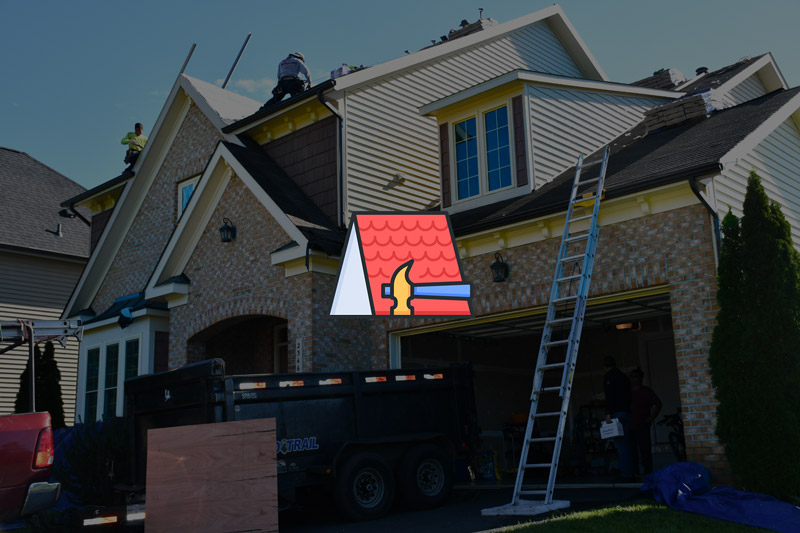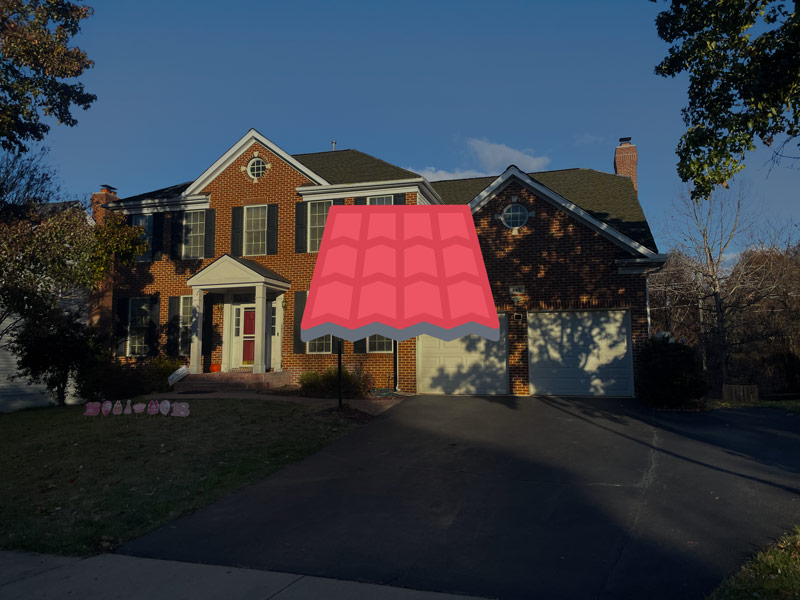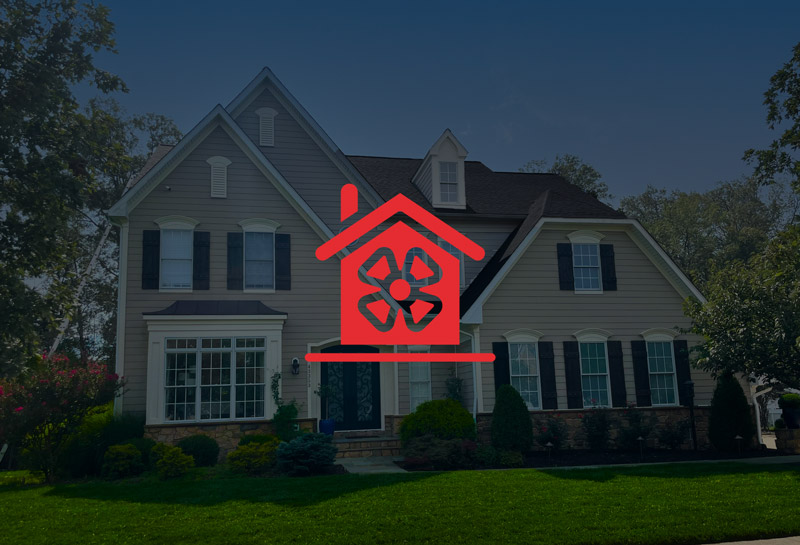Elements of a Roof: Understanding Key Components for Longevity
A roof is more than just a covering; it’s a shield that safeguards your home from the elements. Understanding the elements of a roof is crucial for homeowners, ensuring not only protection but also informed decisions for maintenance and repairs.

Roof Structure
Roof Framing
Roof framing serves as the foundational framework for every roof, and understanding its components is essential.
Trusses and Rafters: The Backbone of a Roof
Trusses and rafters are the primary load-bearing members of a roof’s frame. Trusses, often pre-fabricated, offer strength and stability, distributing the weight evenly across the structure. Rafters, on the other hand, give the roof its traditional look, typically placed at specific intervals to support the roof’s shape and load.
Roof Pitch: Understanding Slope Variations
Roof pitch refers to the steepness of the roof’s slope. This element of roof design affects not only the aesthetics but also the functionality. Steeper pitches shed water and snow efficiently, reducing the risk of water damage and leaks. Shallower pitches, while easier to maintain, might require additional waterproofing measures.
Roof Decking
A solid roof deck forms the base upon which the rest of the roofing materials are installed.
Plywood vs. OSB: Choosing the Right Roofing Material
When it comes to roof decking, both plywood and oriented strand board (OSB) are popular choices. Plywood offers proven durability and resistance to moisture, while OSB is cost-effective and equally resilient. The choice often comes down to budget and regional climate considerations.
Proper Roof Deck Preparation
Regardless of the decking material, proper preparation is vital. Ensuring the roof deck is smooth, free from any irregularities, and adequately secured guarantees a stable foundation for the rest of the roofing system. Proper preparation also prevents potential problems like sagging or uneven surfaces.

Roofing Materials
Roof Covering
The choice of roofing materials is a critical decision that impacts both the aesthetics and functionality of your roof.
Shingles: Varieties and Lifespan
Shingles are one of the most common roofing options, available in a range of materials such as asphalt, wood, and synthetic compounds. Asphalt shingles, particularly, offer affordability and a good balance between durability and appearance. Wood shingles lend a natural charm, while synthetic options mimic the look of premium materials. Understanding the lifespan of each type helps you plan for maintenance and replacements.
Metal Roofing: Durability and Energy Efficiency
Metal roofing has gained popularity due to its exceptional durability and energy-efficient properties. It comes in various forms, including standing seam, corrugated, and metal shingles. Metal roofs are highly resistant to weathering, rust, and fire, making them a long-lasting choice. Additionally, their reflective surface contributes to energy savings by reducing heat absorption.
Tiles and Slate: Aesthetic and Longevity
For those seeking a distinct and elegant appearance, roof tiles and slate offer a timeless aesthetic. Roof tiles, available in clay or concrete, provide a Mediterranean or Spanish-style flair. Slate, on the other hand, boasts a sophisticated appearance and can last for generations when properly maintained. However, these options can be heavier and require sturdy roof framing.
Underlayment and Insulation
The layers beneath the visible roof covering play a crucial role in maintaining the integrity and efficiency of your roof.
Importance of Roof Underlayment
Roof underlayment acts as a secondary barrier against water infiltration. It provides an extra layer of protection in case moisture penetrates the outer roofing material. Synthetic underlayment offers lightweight durability, while traditional felt paper provides a cost-effective solution. Properly installed underlayment is essential to prevent leaks and extend your roof’s lifespan.

Roof Ventilation
Ridge Vents vs. Gable Vents
Roof ventilation is a vital aspect that impacts the overall health and performance of your roof.
Ridge Vents vs. Gable Vents: Making the Right Choice
Ridge vents and gable vents are two popular options for ensuring proper airflow within your attic space. Ridge vents run along the peak of the roof, allowing hot air to escape naturally. Gable vents are located on the sides of the attic and facilitate cross-ventilation. Choosing between these options depends on your roof’s design, climate, and overall ventilation needs.
The Science of Ventilation: How It Affects Your Roof
Understanding the science behind ventilation is key to appreciating its significance. Without adequate airflow, heat and moisture can accumulate in the attic, leading to a range of problems, including premature roof deterioration, mold growth, and higher energy bills. Proper ventilation not only prolongs your roof’s lifespan but also contributes to a more comfortable living environment.
Proper Ventilation for a Healthy Roof
Achieving proper ventilation involves a combination of intake and exhaust vents. Intake vents, typically placed at the soffits, allow fresh air to enter the attic. Exhaust vents, such as ridge vents, turbine vents, or powered attic fans, ensure that hot and moist air is expelled. This continuous airflow prevents the formation of condensation and regulates attic temperatures.
Balancing ventilation elements ensures that your roof maintains consistent temperature and humidity levels, protecting it from potential damage caused by extreme weather conditions. By choosing the appropriate vents and understanding the dynamics of air circulation, you contribute to the longevity and optimal performance of your roof.

Flashing and Sealants
Roof Flashing: Preventing Leaks at Vulnerable Points
Properly installed roof flashing acts as a safeguard against leaks in areas of your roof susceptible to water penetration.
Roof Flashing: The Shield Against Leaks
Flashing consists of thin, weather-resistant materials, often metal, strategically placed at vulnerable points like roof valleys, chimneys, vents, and skylights. These areas are more prone to water intrusion due to their intersections and angles. Flashing redirects water away from these critical junctions, preventing moisture from seeping into your home’s interior.
Sealants and Caulking: Protecting Against Water Intrusion
Sealants and caulking are the unsung heroes of a watertight roof. These compounds provide an additional layer of protection around flashings, joints, and gaps.
Enhancing Protection with Sealants
Often silicone or roofing cement, form flexible barriers that fill gaps and seal edges. They create a tight seal between roofing materials, preventing water, wind-driven rain, and debris from infiltrating. Regular inspections and touch-ups ensure that these protective barriers remain intact.
Maintenance Tips for Flashing and Sealants
Proper maintenance of flashing and sealants is crucial for preventing potential leaks.
Regular Inspection and Maintenance
Scheduled roof inspections, ideally twice a year, allow you to identify any deterioration or damage to flashing and sealants. Look for signs of rust, cracks, or gaps that might compromise their effectiveness. Prompt repairs or replacements are necessary to ensure your roof’s continued protection.
View More Articles
Please Share!











